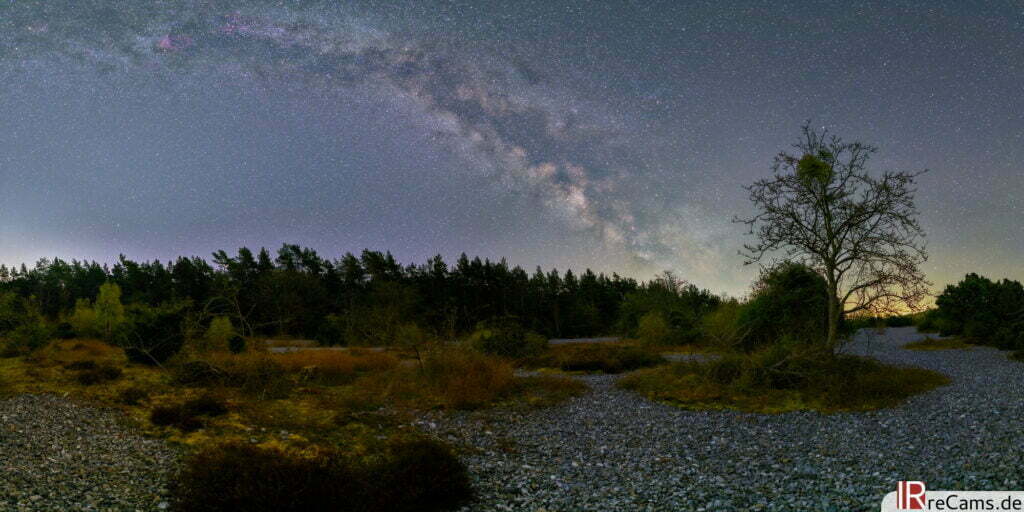Table of contents
- Advantages of Astro conversion
- Which astrofilter
- Astro camera during the day
- Additional filters
Infrared Photography is known to show familiar landscapes in an abstract, artistic and new light. In Astrophotography or Star Photography, however, it is more a matter of portraying the objects as "naturally" as possible, just as we see them. This is especially important for night landscapes, where there is also an exciting foreground to photograph.
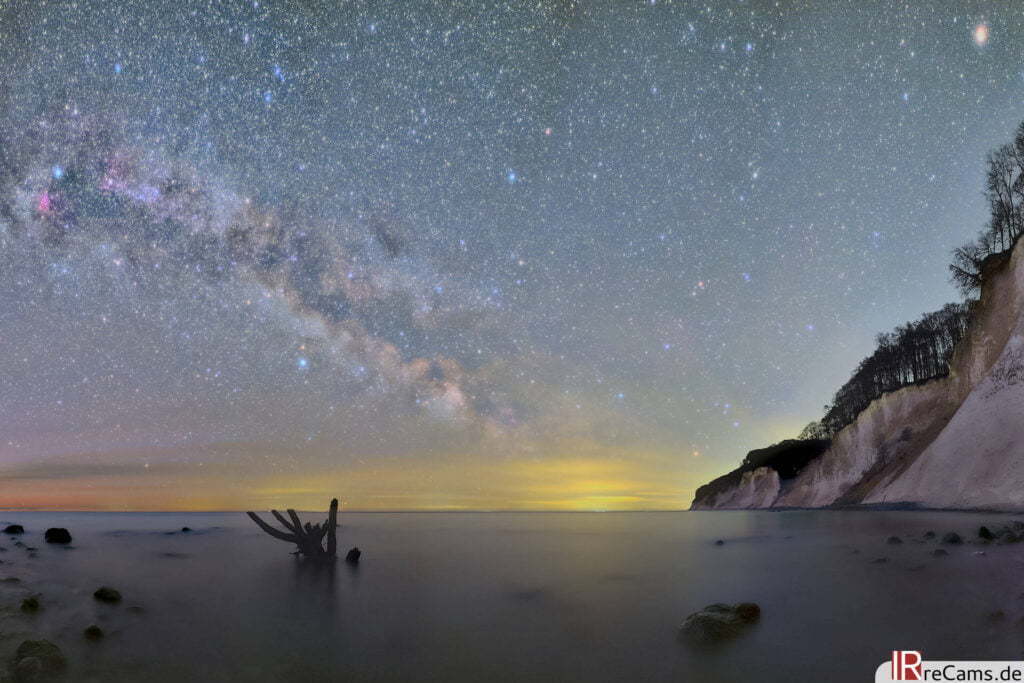
Advantages of an astromodified camera
Modern digital cameras have excellent sensitivity combined with good noise behavior and a high dynamic range. You can even capture the starry sky in acceptable quality with a smartphone. So what on earth is there to improve in this type of photography? To answer these questions, we need to talk about the areas of the spectrum that we can no longer see with a normal camera.
What is H-Alpha radiation?
A luminous object emits light. This can be a candle, an LED lamp or a star. However, the light is not the same: depending on the light source, it differs in its spectrum - simply put, in the distribution of colors. What we perceive as white light is actually a mixture of all spectral colors. What a spectrum looks like, i.e. which colors it contains, depends among other things on the composition of the light source at particle level. By far the most common atom in the universe is hydrogen (symbol H) and now it gets interesting again.
When hydrogen is excited (e.g. by heat or radiation), it emits light. But not white light, but very discrete wavelengths (i.e. colors). The strongest wavelength is the so-called H-alpha radiation - it has a wavelength of exactly 656.28 nanometers (nm). This wavelength corresponds to a deep red in the spectrum that we can see. While we can just about see this wavelength with our eyes, most digital cameras unfortunately find this difficult.
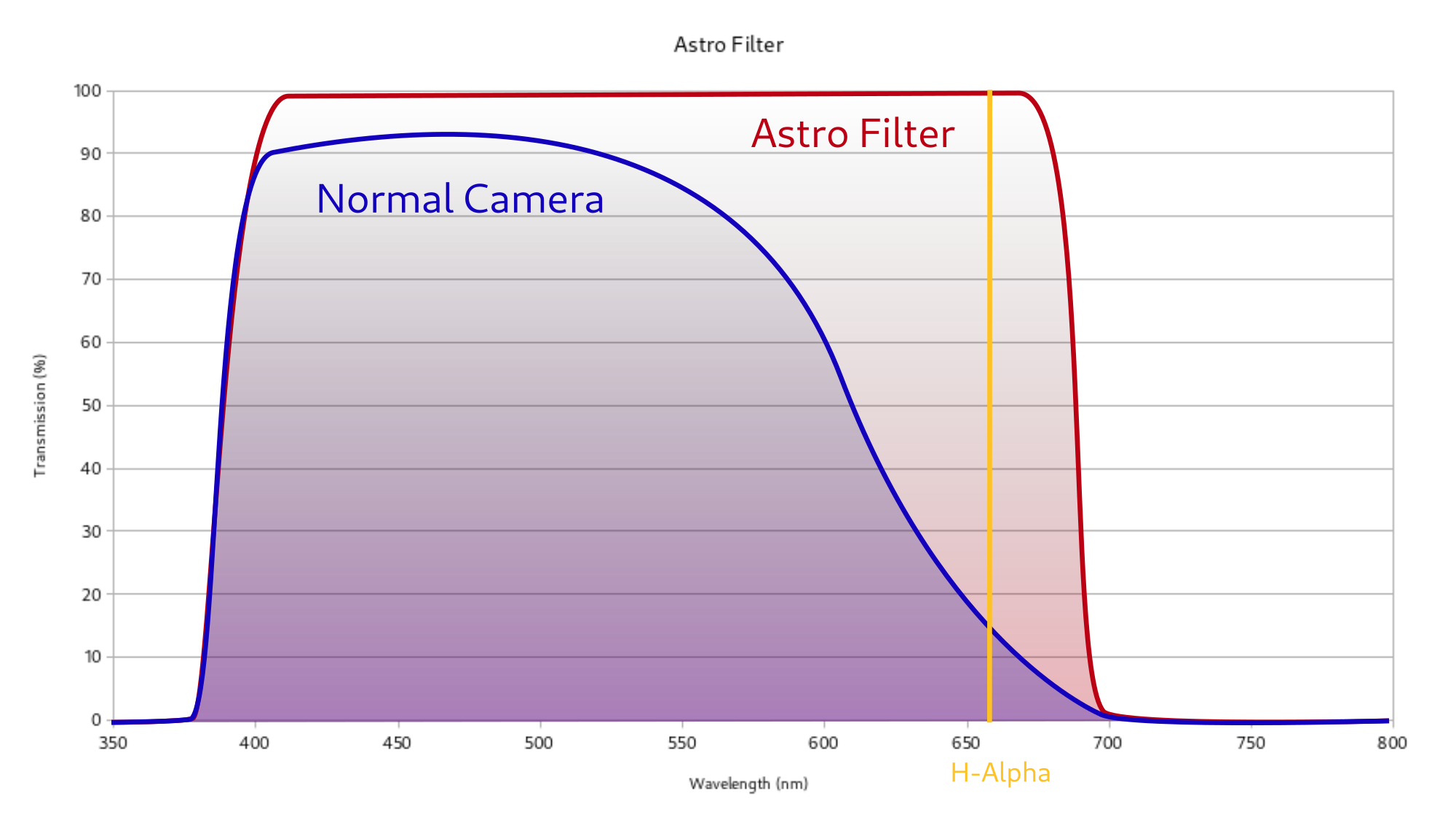
Astrophotography with a normal camera
Depending on the manufacturer and model, the H-alpha sensitivity of a digital camera is only between 10 and 30 %, typically around 15 %. This makes these spectral ranges practically invisible in the already very dark night. This is due to the UV/IR blocking filter (also known as a hotmirror), which is installed by the manufacturers directly in front of the sensor. This is necessary to ensure good color reproduction during the day, but is just as much a thorn in the side of astrophotographers as it is for the Infrared photographers. For this reason, the blocking filter is removed during astromodification and replaced by a filter that allows the H-alpha radiation to pass through.
Astromodified camera vs. normal camera
Even though the proportion of hydrogen in the universe is very large, the distribution is not uniform. There are objects in the night sky that emit a very small amount of H-alpha radiation and there are objects that emit almost exclusively in this range (e.g. some nebulae). Increased H-alpha sensitivity makes these areas visible on the images in the first place, resulting in a much more interesting and "colorful" image. What is not significantly improved by a conversion, however, is the basic sensitivity of the camera. Although theoretically more light reaches the sensor, the actual gain in overall brightness falls into the range below 1/3 EV.
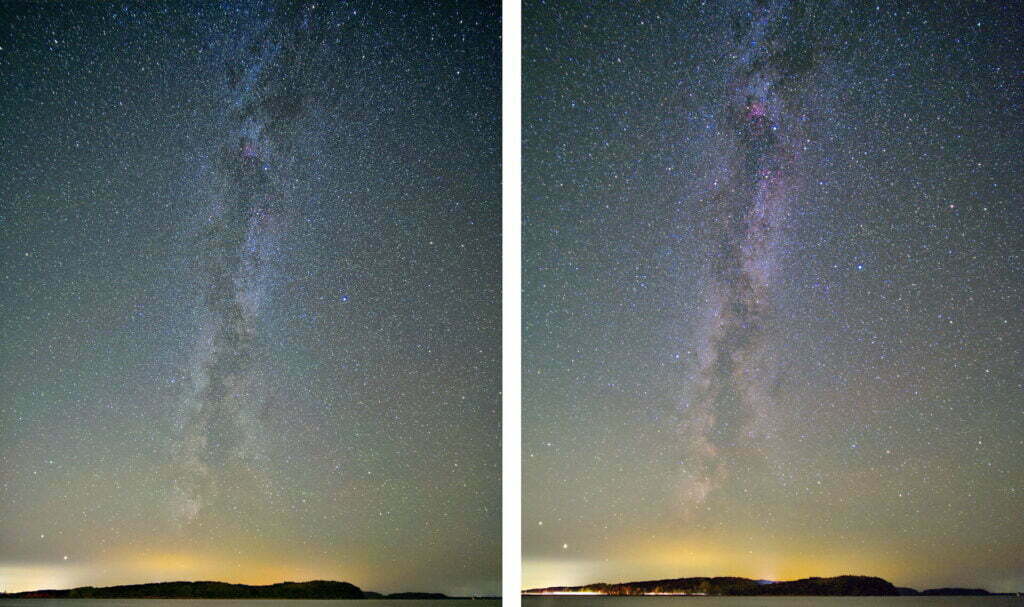
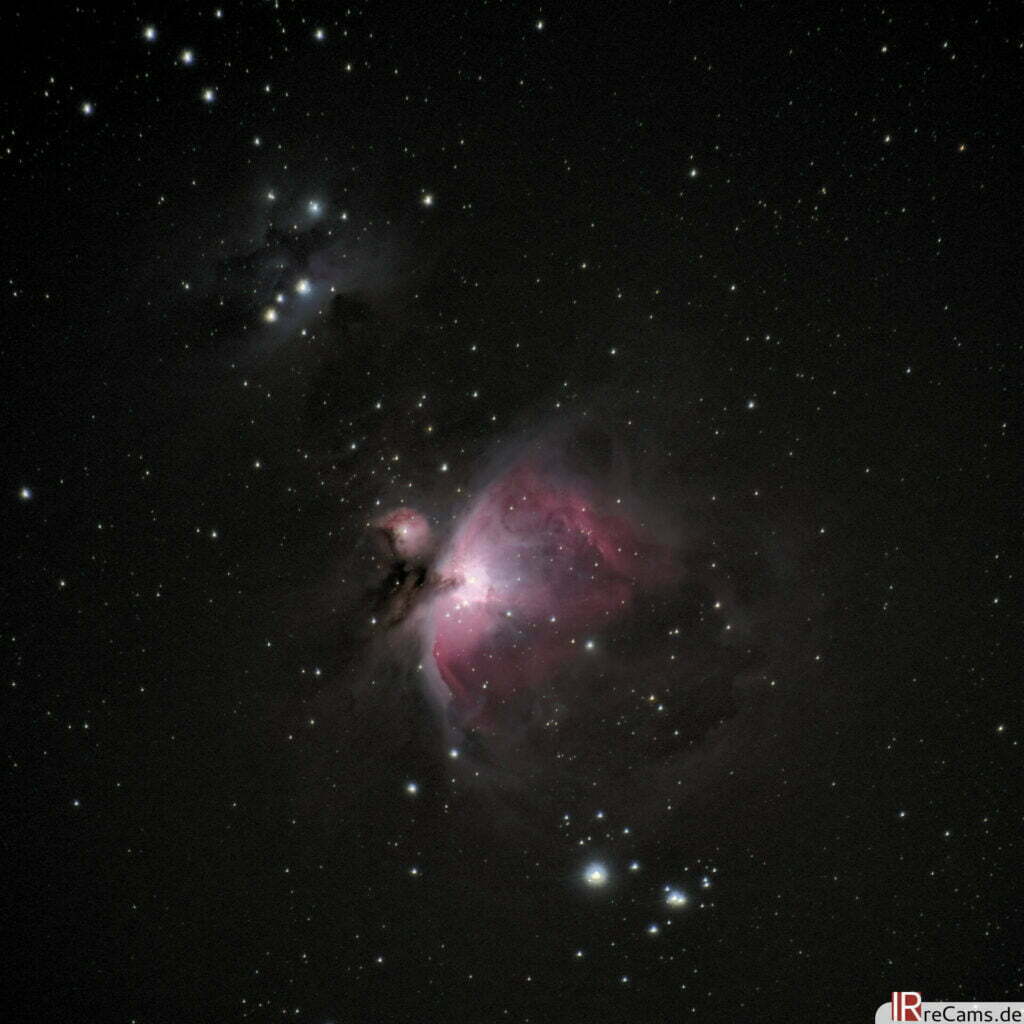
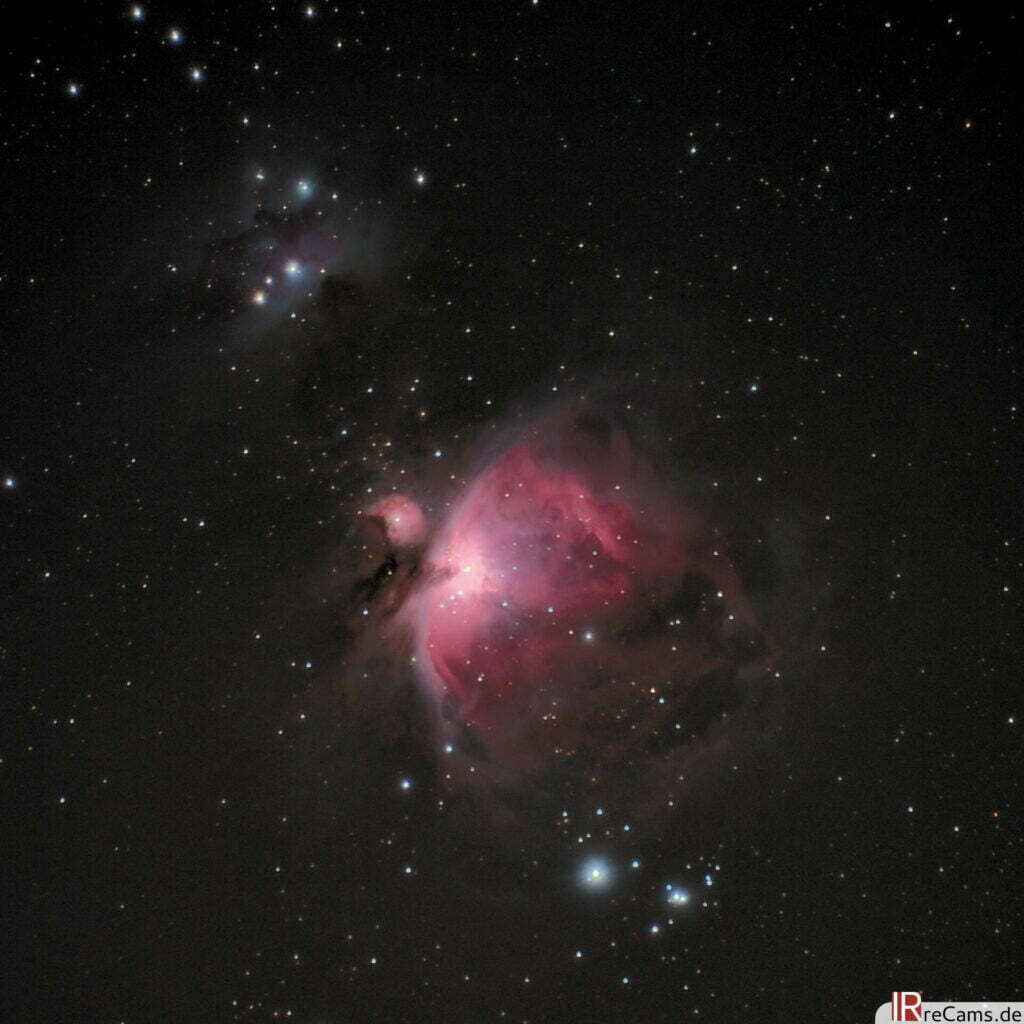
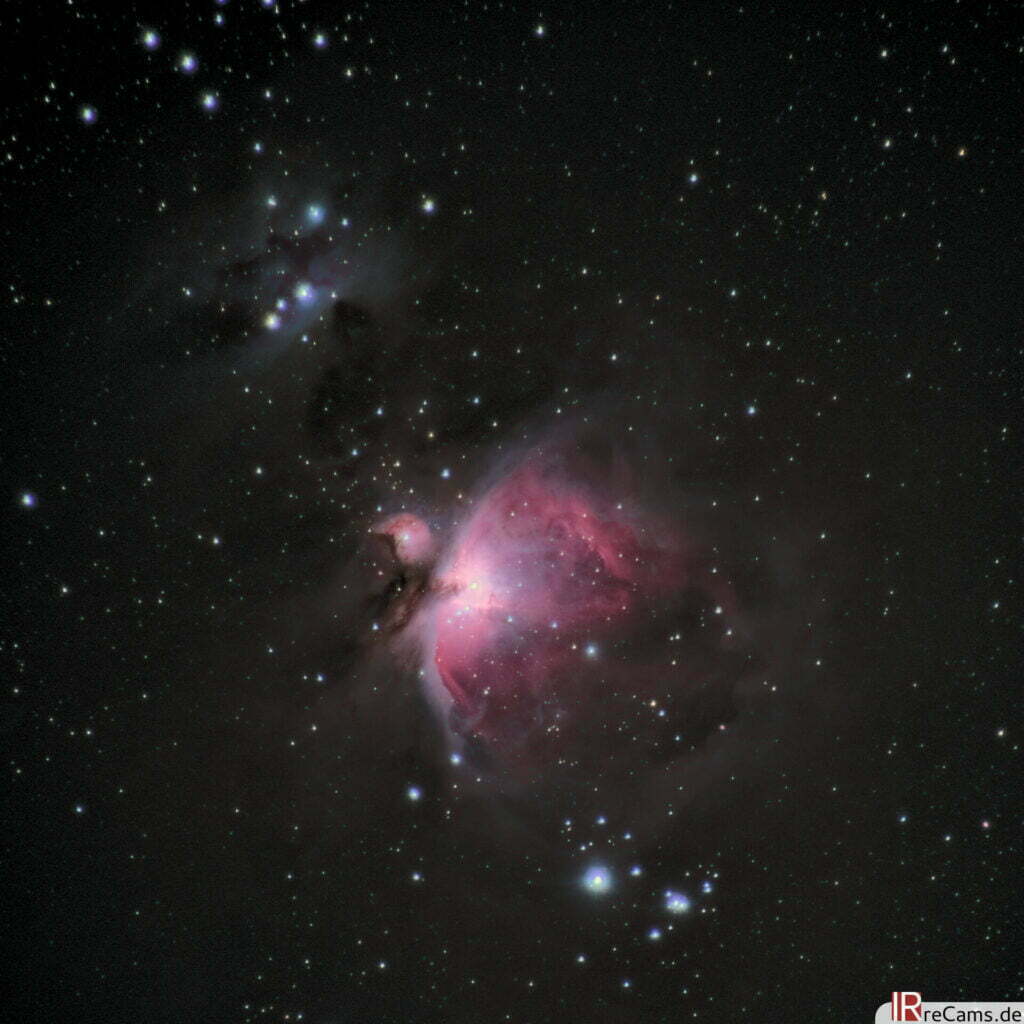
Which camera is best for a Astro conversion
Just like for an Infrared conversion, the following applies to an Astro conversion: The sensors of all manufacturers are practically identical in terms of their sensitivity in the H-Alpha spectral range. Much more interesting and important is the noise behavior and the dynamic range of the sensor - after all, we shoot in very dark light conditions with high ISO values. This is not much of a challenge for all cameras that have come onto the market since the mid-2010s. Unfortunately, older cameras will have a hard time in this discipline. So in short: Every reasonably modern camera is suitable for an Astro conversion.
However, there is a technical limitation, which is why not all cameras from the pricelist are available in the Shop for a Astro conversion . There are cameras that have an infrared LED installed internally, often this is part of the shutter mechanism. The stray light of these LEDs disturbs the image during a night shot and makes it unusable in the worst case. This problem affects e.g. all Sony Alpha 7 cameras of the 2nd generation, which is why they are not selectable for an Astro conversion.
